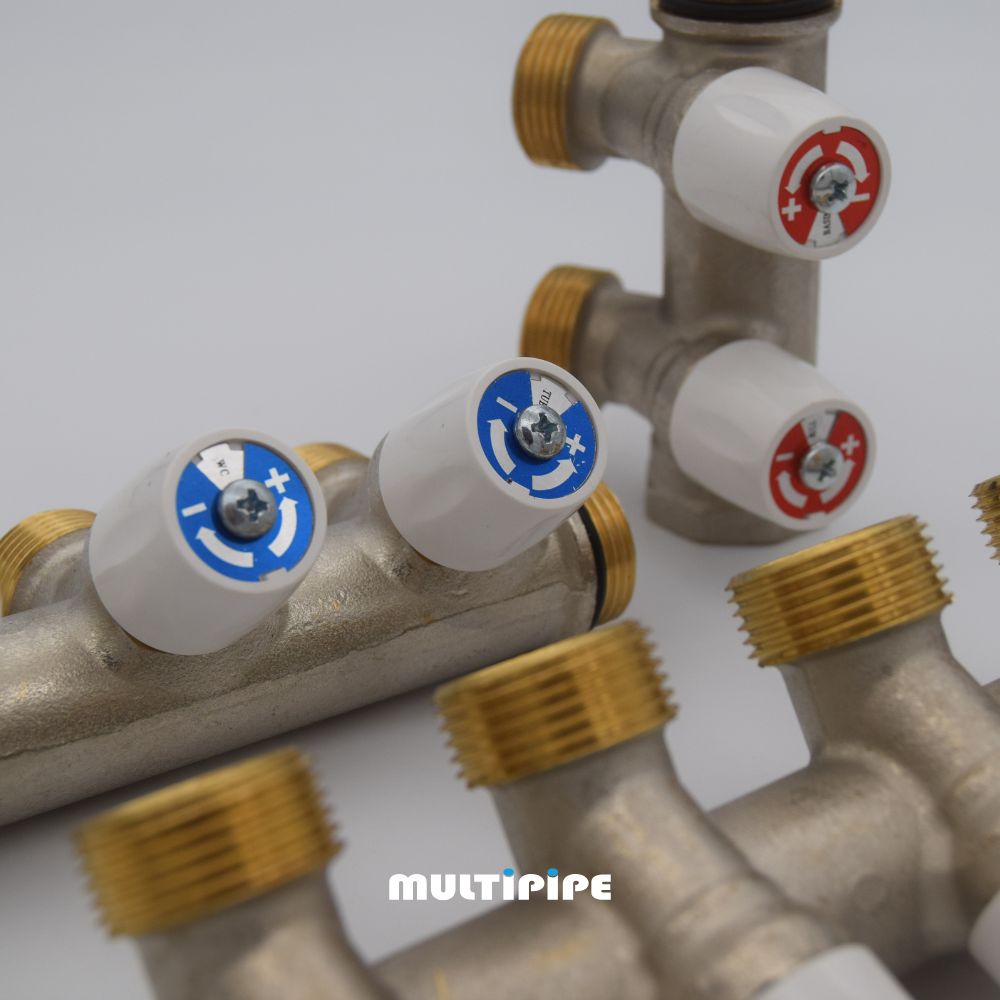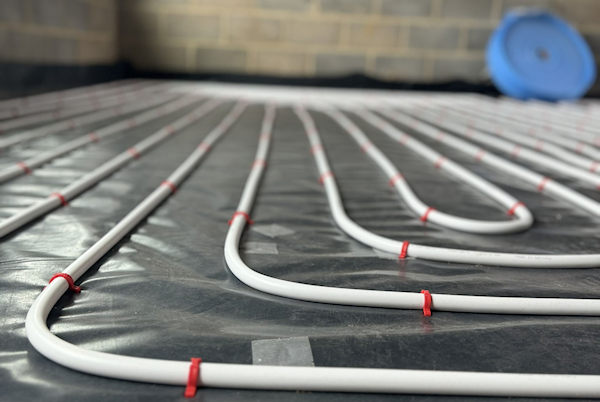
What is Manifold Plumbing?
Manifold plumbing refers to the use of a manifold in a plumbing system. The manifold acts as a central hub in a heating system that distributes heated water to different zones of your home. It ensures that each zone receives an even distribution of heat, allowing for efficient and effective heating throughout the home.
Unlike most other technologies, plumbing system layouts haven’t made any significant leaps forward for decades. Manifold plumbing is not new and is often used in heating systems in new builds where you have small bore pipes for radiators. But manifold plumbing is not just limited to radiators. Sanitary manifolds can also bring benefits to your taps.
Plumbing manifolds are used to distribute hot and cold water to appliances around the building. As pipes run in continuous loops to and from the manifold to each piece of sanitary wear (sinks, baths, washing machines etc.), the only fittings in the system are at the appliance and the manifold.
With this in mind, is it time you looked at a different way of getting water from point A to B? Have you used manifold plumbing?
Individual Flow Control
A key benefit of a manifold system is the ability for individual flow control. In the event of an issue, the individual appliances can be isolated whilst leaving the rest of the system fully operational.
At its most basic, manifold plumbing means that every appliance in the building can be connected from the manifold to the appliance with no fittings. Therefore, the possibility of leaks is completely removed as there are no fittings between pipes, under floors or over ceilings.
The Key Advantages of Manifold Plumbing
We have set out the key advantages of the two methods of using manifold plumbing below.
Radiator Manifold Plumbing
- Centralised header pipe means sizing is far easier.
- The components used on a job are far less with even fewer variants. For example, if you have a 10 rad system, you could be looking at over 60 fittings. In contrast, it would be around 50% with a manifold system but amazingly only 2 types! Manifold connection, end connections and the manifold.
- The pipe can be hidden; so with a single run from point A to Point B, you can hide away all your pipes.
- It opens the option to control each room individually on a fully hard wired system. Also, opening up the perfect heating system for ground floor UFH and first-floor radiators, all off one control system.
- With a lockshield manifold variant, you can even balance your radiator at the manifold! No more unbalanced issues because changes have been made out of your control.
Domestic Manifold Plumbing
- With a dedicated run to each appliance, you can easily isolate at the manifold, making servicing easier and quicker (no more crawling under the sink to isolate).
- It fits in with water regulations of ensuring domestic pipes can be withdrawn by using pipe in conduit.
- Domestic systems have random water demands; by having a larger header pipe, the pressure drops are much less, meaning a smaller reduction in flowrate when more than one appliance runs.
- Like the radiator, a lot fewer fittings are used. And typically, you are only using 2-3 pipe sizes.
- If you keep your manifold local to the rooms, hot water heat up times will be faster.
How to Choose the Right Manifold for Your Underfloor Heating System
When choosing a manifold for your underfloor heating system, consider the following factors:
- Size of the System: The size of your underfloor heating system will determine the size and type of manifold you need. Larger systems may require a more robust stainless steel manifold.
- Number of Zones: The number of zones in your home will also influence your choice of manifold. Each zone requires its own loop on the manifold.
- Budget: Your budget will play a significant role in your choice of manifold. While stainless steel manifolds are more durable, they are also more expensive than brass manifolds.
In conclusion, a manifold connection takes the panic out of plumbing; there is no chance of water flooding into a building in an uncontrolled way. As each appliance has its own circuit of pipework, if the appliance leaks or is faulty, that circuit can be turned off. Your customer will not have to turn off the stopcock, make an emergency call and then wait stranded until their plumber can arrive. For installers, it can mean fewer emergency callouts, particularly over busy periods.
Learn More:





